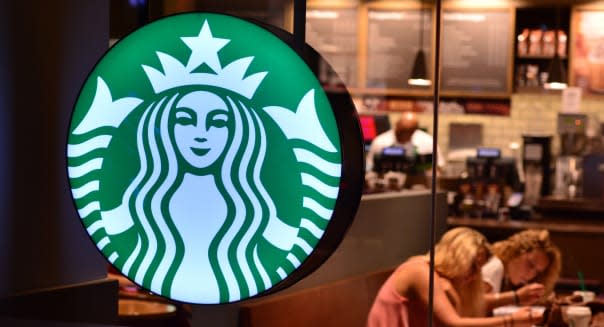Stock Splits Are Hot Again

Some Starbucks (SBUX) investors likely spat out their morning coffee on April 9. The same stock that closed at $95.23 the night before went on to open at $47.65 the next morning.
What happened? Did millennials suddenly realize that mocha Frappuccinos are unhealthy? Did CEO Howard Schultz try to bounce back from the #RaceTogether fiasco by making lattes free for the balance of the year? None of that happened. The only thing that took place at Starbucks is that the baron of baristas executed a two-for-one stock split.
Every share would be replaced by two shares at half the price. Someone that owned 100 shares at $95.23 worth $9,523 at the close on April 8 now owned 200 shares at $47.65 worth $9,530 the next morning. They didn't lose half of their money. They didn't lose any money, actually.
It's a stock split, and after years of the market ignoring the practice, it seems as if the zero-sum game is back in fashion.
Splitting Headache
A stock split doesn't change anything -- in theory. If you have 100 shares at $100 or 10 shares at $1,000, it's still the same $10,000 sum. However, it's the perceived value of the market that has drawn companies to declare stock splits in the past.
It's purely psychological, but some investors feel as if they are getting in on the ground floor if they buy a company with a low price. They don't always factor in the important share count. Whether a company has 100 million shares outstanding at $200 or 1 billion shares outstanding at $20 it's still a $20 billion company.
Another factor that encourages stock splits is that it's often a show of internal company confidence. When Starbucks declared a two-for-one stock split -- and it did so several weeks before it took place -- the assumption is that it's confident enough in its near-term prospects that its stock will continue to rise after the split. If a company with a $50 stock went for a 10-for-one split, it would have to be pretty sure that its stock wouldn't dip below $5 after the move, inviting speculators to replace conservative investors.
Picking Up Splits Isn't Just for Bowlers Anymore
Tech's biggest names seemed to be in an arms race last year. Apple (AAPL) and Google (GOOGL) were apparently trying to beat the other to hit a four-digit share price. When Google got there first in late 2013, it followed with what was in effect a two-for-one stock split by issuing a new share of non-voting stock for every single share out at the time. Apple followed with a seven-for-one stock split.
The split party won't end with Starbucks. Netflix (NFLX) shareholders will vote in a few weeks to authorize an increase in the outstanding share count. Netflix plans to declare a stock split once that's approved. Ross Stores (ROST) -- the discount apparel retailer with a premium price on its stock -- will be executing a two-for-one split in June.
Investors will continue to cheer on stock split announcements even when they don't fully understand them. No one will be shocked if Chipotle Mexican Grill (CMG) -- perched at a price of nearly $700 -- announces a split later this year. It's simple math. It's zero-sum math. However, it's hard to argue against investor psychology sometimes.
Motley Fool contributor Rick Munarriz has no position in any stocks mentioned. The Motley Fool owns and recommends Apple, Chipotle Mexican Grill, Google (A shares) and Starbucks. Try any of our Foolish newsletter services free for 30 days. Check out our free report on one great stock to buy for 2015 and beyond.

